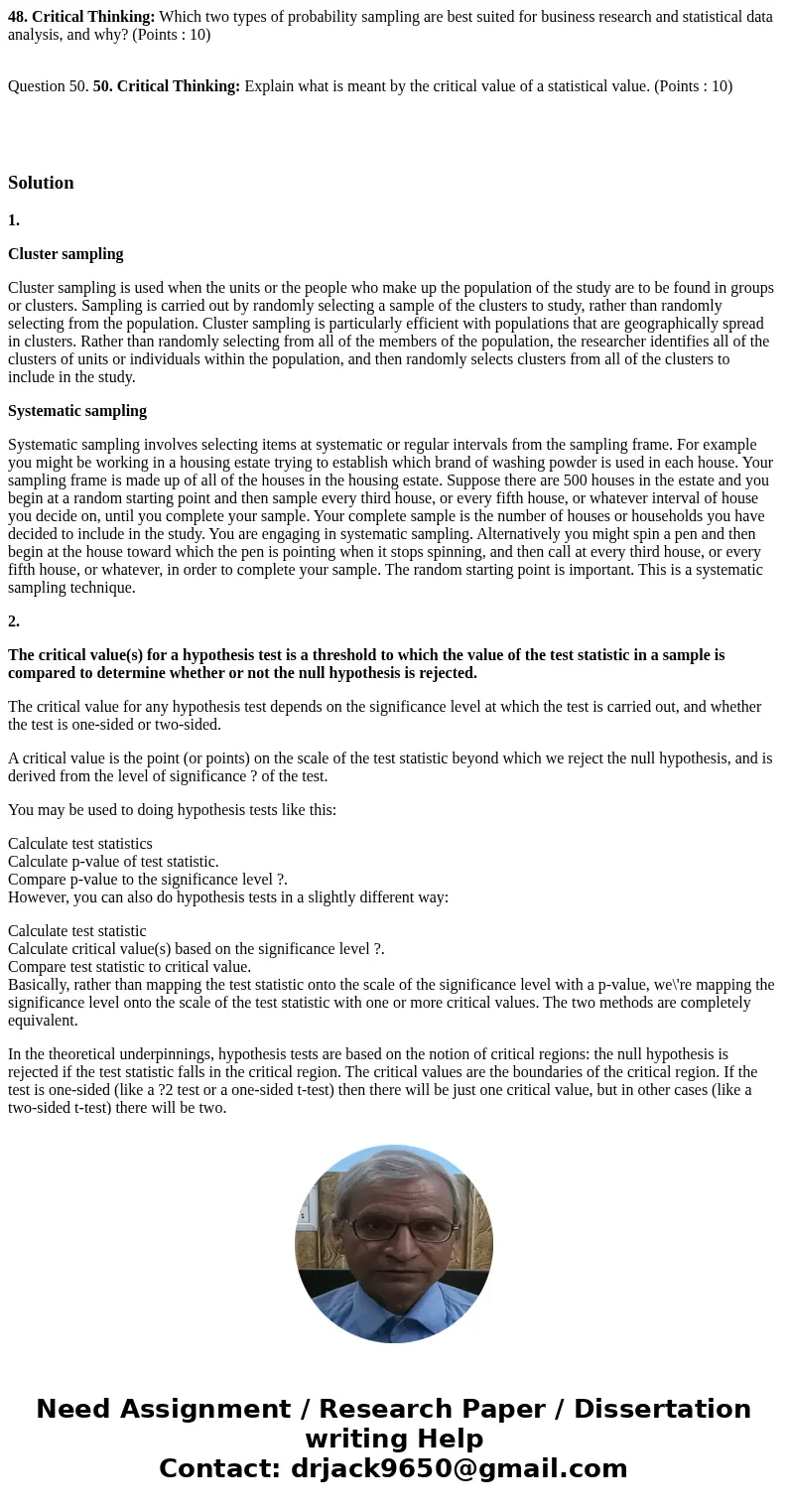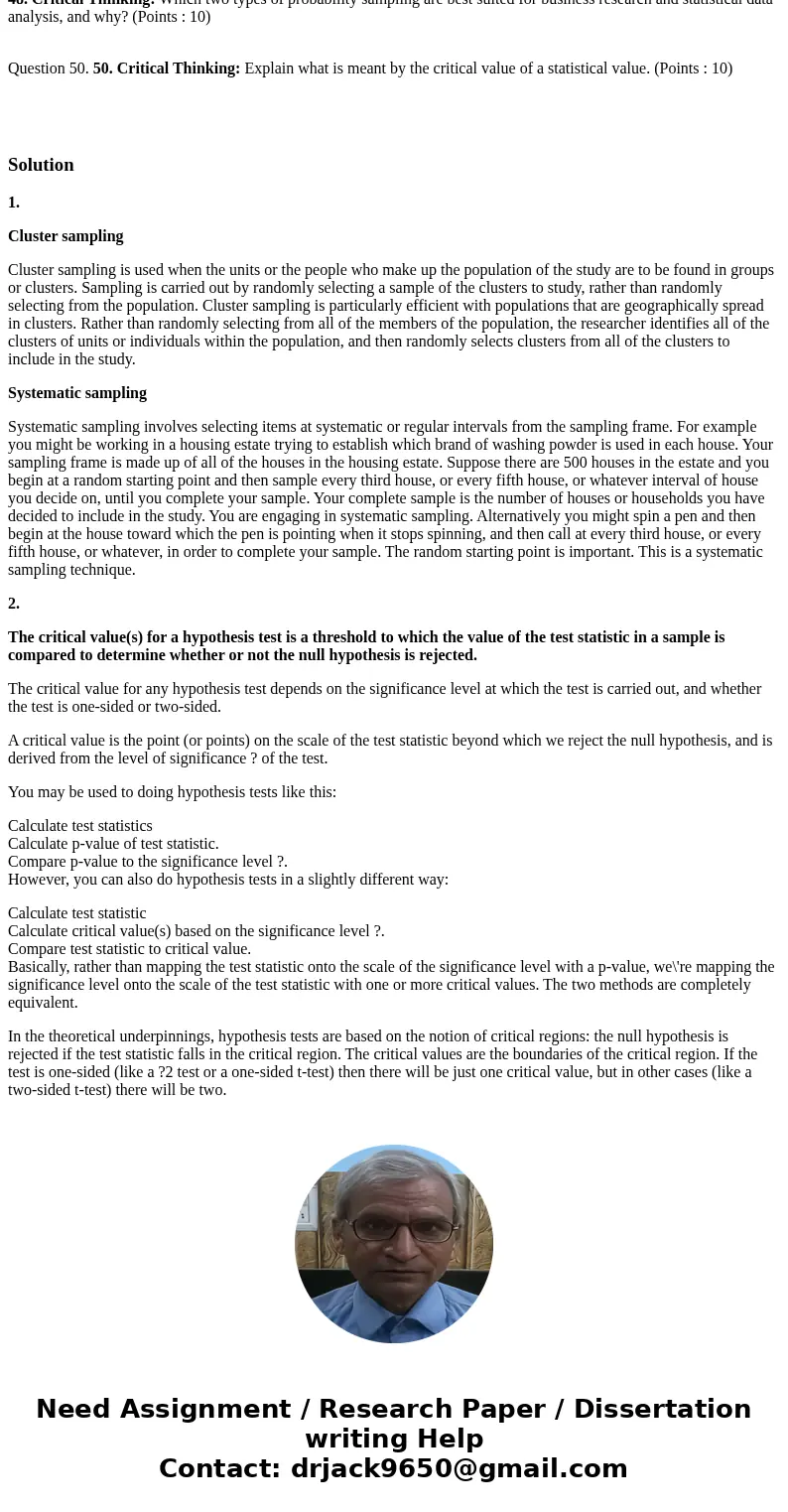48 Critical Thinking Which two types of probability sampling
48. Critical Thinking: Which two types of probability sampling are best suited for business research and statistical data analysis, and why? (Points : 10)
Question 50. 50. Critical Thinking: Explain what is meant by the critical value of a statistical value. (Points : 10)
| |
Solution
1.
Cluster sampling
Cluster sampling is used when the units or the people who make up the population of the study are to be found in groups or clusters. Sampling is carried out by randomly selecting a sample of the clusters to study, rather than randomly selecting from the population. Cluster sampling is particularly efficient with populations that are geographically spread in clusters. Rather than randomly selecting from all of the members of the population, the researcher identifies all of the clusters of units or individuals within the population, and then randomly selects clusters from all of the clusters to include in the study.
Systematic sampling
Systematic sampling involves selecting items at systematic or regular intervals from the sampling frame. For example you might be working in a housing estate trying to establish which brand of washing powder is used in each house. Your sampling frame is made up of all of the houses in the housing estate. Suppose there are 500 houses in the estate and you begin at a random starting point and then sample every third house, or every fifth house, or whatever interval of house you decide on, until you complete your sample. Your complete sample is the number of houses or households you have decided to include in the study. You are engaging in systematic sampling. Alternatively you might spin a pen and then begin at the house toward which the pen is pointing when it stops spinning, and then call at every third house, or every fifth house, or whatever, in order to complete your sample. The random starting point is important. This is a systematic sampling technique.
2.
The critical value(s) for a hypothesis test is a threshold to which the value of the test statistic in a sample is compared to determine whether or not the null hypothesis is rejected.
The critical value for any hypothesis test depends on the significance level at which the test is carried out, and whether the test is one-sided or two-sided.
A critical value is the point (or points) on the scale of the test statistic beyond which we reject the null hypothesis, and is derived from the level of significance ? of the test.
You may be used to doing hypothesis tests like this:
Calculate test statistics
Calculate p-value of test statistic.
Compare p-value to the significance level ?.
However, you can also do hypothesis tests in a slightly different way:
Calculate test statistic
Calculate critical value(s) based on the significance level ?.
Compare test statistic to critical value.
Basically, rather than mapping the test statistic onto the scale of the significance level with a p-value, we\'re mapping the significance level onto the scale of the test statistic with one or more critical values. The two methods are completely equivalent.
In the theoretical underpinnings, hypothesis tests are based on the notion of critical regions: the null hypothesis is rejected if the test statistic falls in the critical region. The critical values are the boundaries of the critical region. If the test is one-sided (like a ?2 test or a one-sided t-test) then there will be just one critical value, but in other cases (like a two-sided t-test) there will be two.


 Homework Sourse
Homework Sourse